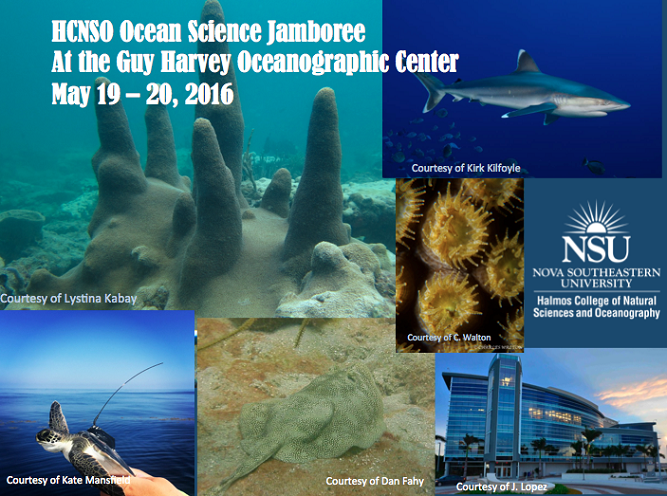A comparative analysis of the vertical and horizontal assemblages of crustaceans in the Order Euphausiacea (Malacostraca: Eucarida) in the Northern Gulf of Mexico
Location
Guy Harvey Oceanographic Center Facility
Start
5-20-2016 1:45 PM
End
5-20-2016 2:00 PM
Abstract
Euphausiids (micronekton of the order Euphausiacea) are an important component of the marine ecosystem as they make up substantial portions of the diets of many organisms. Euphausiids act as intermediates within the marine food web, bridging the gap between the primary producers and the organisms at higher trophic levels. Any changes to euphausiid assemblages and/or species biomass could result in indirect changes throughout the ecosystem, shifting up the trophic chain. Additionally, they remain a relatively understudied group in the northeastern region of the Gulf of Mexico, making the study of their population assemblages in the region significant to understanding its overall ecosystem dynamics. The current study will analyze trawl samples collected on the DEEPEND cruises during May and August of 2015 and 2016 in the Northeastern Gulf of Mexico. Euphausiid abundances, diversity, and biomass will be examined from both day and night trawls, to determine: 1) if and how their vertical distributions change between the day and night, 2) if there is a seasonal aspect to their reproduction, and 3) if there is seasonal and/or geographical variation in the structure of their assemblage. In addition, these data will be compared to data collected in 2011, shortly after the Deepwater Horizon oil spill, to determine if there have been any significant changes in the euphausiid assemblage since the spill occurred.
A comparative analysis of the vertical and horizontal assemblages of crustaceans in the Order Euphausiacea (Malacostraca: Eucarida) in the Northern Gulf of Mexico
Guy Harvey Oceanographic Center Facility
Euphausiids (micronekton of the order Euphausiacea) are an important component of the marine ecosystem as they make up substantial portions of the diets of many organisms. Euphausiids act as intermediates within the marine food web, bridging the gap between the primary producers and the organisms at higher trophic levels. Any changes to euphausiid assemblages and/or species biomass could result in indirect changes throughout the ecosystem, shifting up the trophic chain. Additionally, they remain a relatively understudied group in the northeastern region of the Gulf of Mexico, making the study of their population assemblages in the region significant to understanding its overall ecosystem dynamics. The current study will analyze trawl samples collected on the DEEPEND cruises during May and August of 2015 and 2016 in the Northeastern Gulf of Mexico. Euphausiid abundances, diversity, and biomass will be examined from both day and night trawls, to determine: 1) if and how their vertical distributions change between the day and night, 2) if there is a seasonal aspect to their reproduction, and 3) if there is seasonal and/or geographical variation in the structure of their assemblage. In addition, these data will be compared to data collected in 2011, shortly after the Deepwater Horizon oil spill, to determine if there have been any significant changes in the euphausiid assemblage since the spill occurred.


